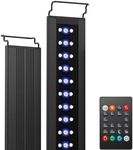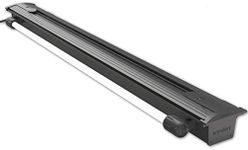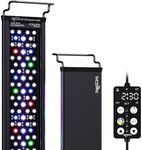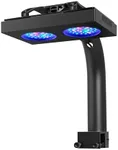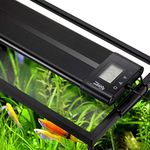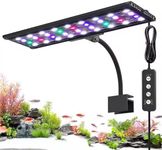Buying Guide for the Best Aquarium Lights
Choosing the right aquarium lights is crucial for the health and well-being of your aquatic life. The right lighting not only enhances the beauty of your aquarium but also supports the growth of plants and the health of fish. When selecting aquarium lights, consider the type of aquarium you have, the needs of your aquatic plants and animals, and the aesthetic effect you want to achieve. Understanding the key specifications will help you make an informed decision that suits your specific aquarium setup.Light SpectrumThe light spectrum refers to the range of light wavelengths emitted by the aquarium light. This is important because different wavelengths support different biological processes in plants and animals. For example, blue light promotes photosynthesis in plants, while red light can enhance the coloration of fish. When choosing a light spectrum, consider the type of plants and fish you have. If you have a planted tank, a full-spectrum light that mimics natural sunlight is ideal. For fish-only tanks, you might prioritize lights that enhance the colors of your fish.
Light IntensityLight intensity is the amount of light produced by the aquarium light, usually measured in lumens. This is important because different aquatic environments require different light intensities. High-intensity lights are necessary for tanks with demanding plants that require a lot of light, while low-intensity lights are suitable for tanks with low-light plants or fish that prefer dimmer environments. To choose the right intensity, assess the needs of your plants and fish. If you have a densely planted tank, opt for higher intensity. For a simple fish tank, moderate to low intensity may suffice.
Light DurationLight duration refers to how long the aquarium lights are on each day. This is crucial for maintaining a healthy balance in your aquarium ecosystem. Too much light can lead to algae growth, while too little can hinder plant growth. Typically, 8-12 hours of light per day is recommended for most aquariums. Consider using a timer to ensure consistent light duration. Adjust the duration based on the specific needs of your plants and fish, and observe how they respond to find the optimal balance.
Energy EfficiencyEnergy efficiency refers to how much electricity the aquarium light uses relative to the amount of light it produces. This is important for both environmental and cost reasons. LED lights are generally the most energy-efficient option, providing bright light with lower energy consumption. When choosing lights, consider the long-term energy costs and the environmental impact. If you are looking to minimize energy use, opt for LED lights, which also tend to have a longer lifespan compared to other types.
AdjustabilityAdjustability refers to the ability to change the light settings, such as intensity, color, and duration. This is important for customizing the lighting to suit the specific needs of your aquarium. Some lights offer programmable settings that allow you to simulate natural day and night cycles. When choosing adjustable lights, consider how much control you want over your aquarium's lighting environment. If you have a diverse range of plants and fish, adjustable lights can help you create the ideal conditions for each species.






